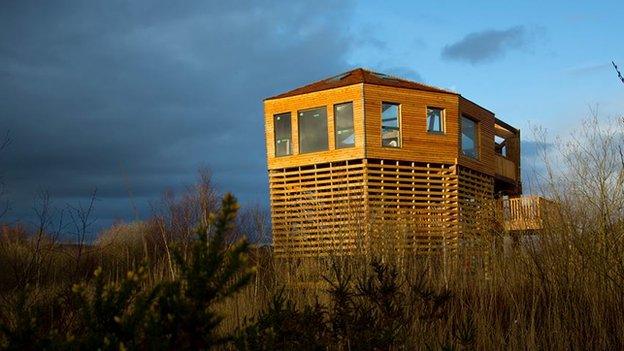Dyfi Osprey project's rare bird ringer quits after abuse
- Published
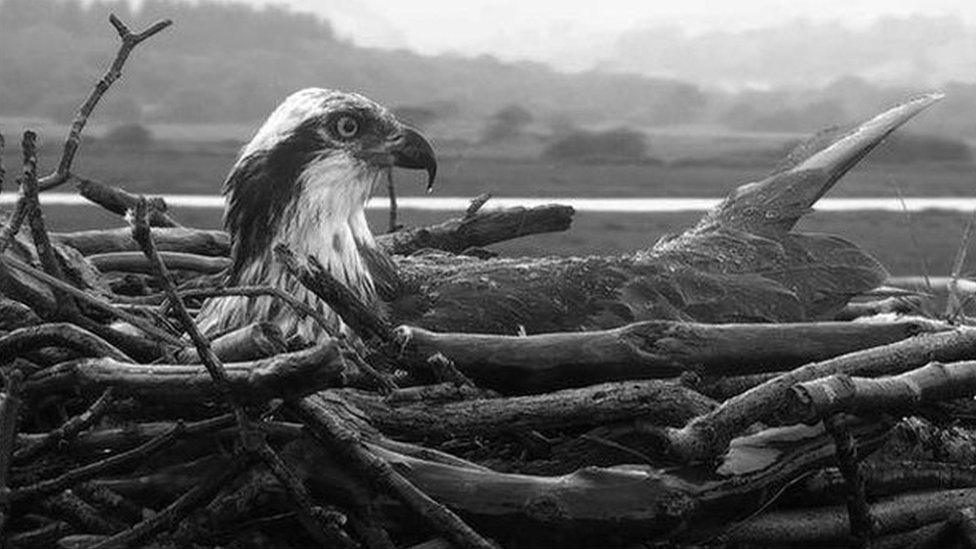
A bird sanctuary has defended decisions made over the welfare of ospreys after social media criticism.
Dyfi projects manager Emyr Evans said "threats, some of them very personal" had been received over decisions at the Glaslyn and Dyfi nests in mid Wales.
He added a ringer with decades of experience had quit as a result.
Mr Evans said the projects welcomed scrutiny but had received "a torrent of critical, vitriolic and abusive comments".
Some of the criticism focused on the issue of intervention when a chick is injured or unwell - with some claiming more should be done at the first sign of trouble and others arguing against any intervention at all.
Mr Evans said decisions were based solely on what is deemed to be the best course of action at that time for the osprey and its family members - with these carrying legal implications.
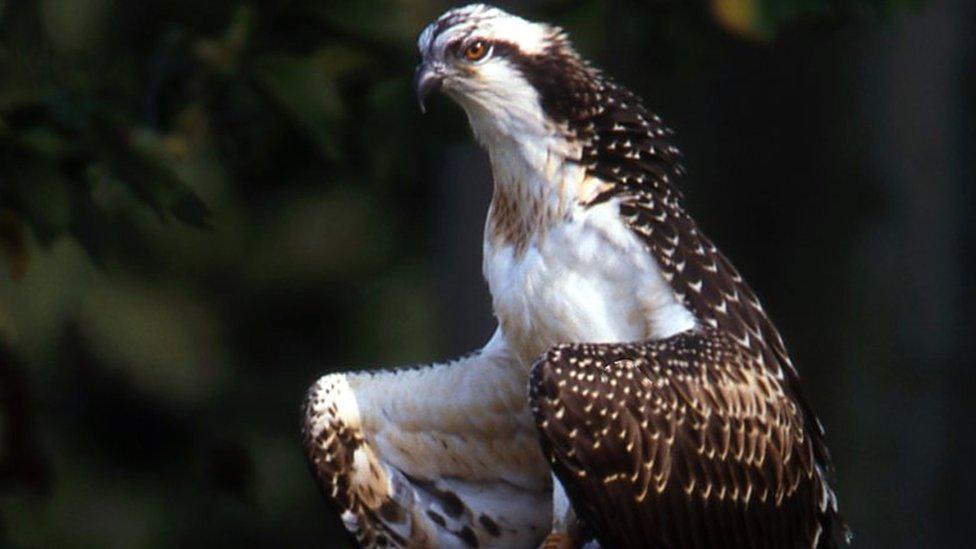
There was also criticism of bird ringing (an identification tool), which Mr Evans said was strictly regulated and had "stood the test of time" for more than a century.
"Ringers are tree climbers, cliff hangers, cave clingers and rope and ladder hugging professionals working in inaccessible and tough environments most of us skip a heart beat just thinking about," he added.
"They are amongst the most respected fieldworkers in the bird world, and most do it for no pay, purely on a voluntary basis.
"It is heartbreaking that a ringer with decades of experience and one of the most caring and compassionate people I know, decides to throw in the towel after being so upset by a tiny minority."
During the first 10 years at Glaslyn, Gwynedd, two or three chicks were born per year, "completely defying" the national average by 200-300%, Mr Evans said in a statement released by Bywyd Gwyllt Glaslyn Wildlife and Montgomeryshire Wildlife Trust, external.
But in 2016, a bird was displaced in his nest at the Dyfi project near Machynlleth and photographed a few weeks later with a possible injury, while an egg did not hatch. The same situation occurred at Glaslyn.
Clarach the osprey returned to Wales after nearly three years
"It's hardly ever happened before," Mr Evans said.
Some of the chicks also sustained injuries, two survived and one died.
"The next time we have an injured chick or an osprey in distress somewhere, the last thing we want to do is to worry about what people, sometimes thousands of miles away, may think of our decisions," Mr Evans said.
"The vast majority of you guys are completely understanding of the nature of our work and the decisions we sometimes have to make when things go wrong."
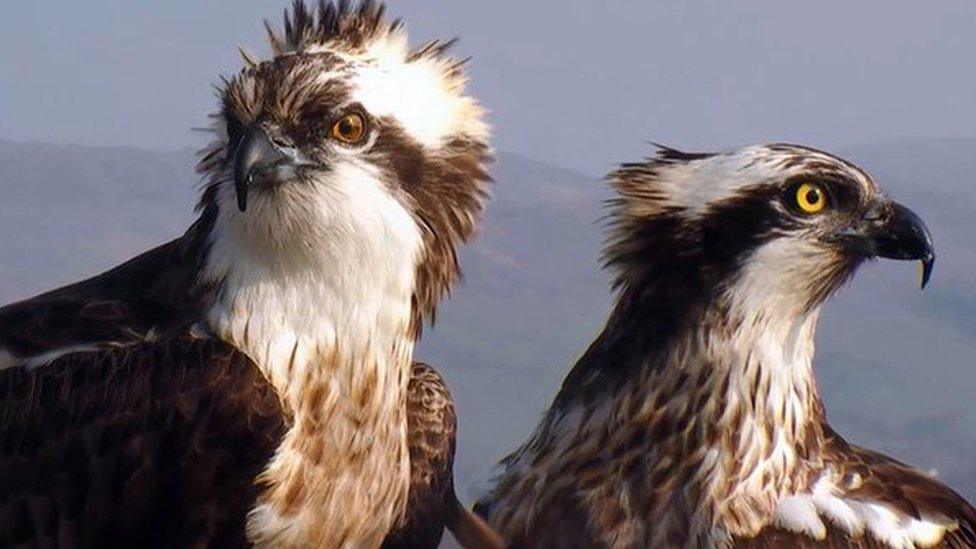
Monty (left) and Glesni at Cors Dyfi
Mr Evans added the project cared deeply about the ospreys but could not always guarantee "happy ever after" endings.
"Abuse has no place in civil society," he said.
"At the first sign of a limp or a cough, we can't simply scramble people together and climb a 100 foot tree or ladder up to a 40 foot platform. These actions have consequences on all sorts of other things such as the other birds concerned, legally, and the safety of the people involved.
"These are wild birds, it's nature, it's unpredictable and it certainly isn't Disney World."
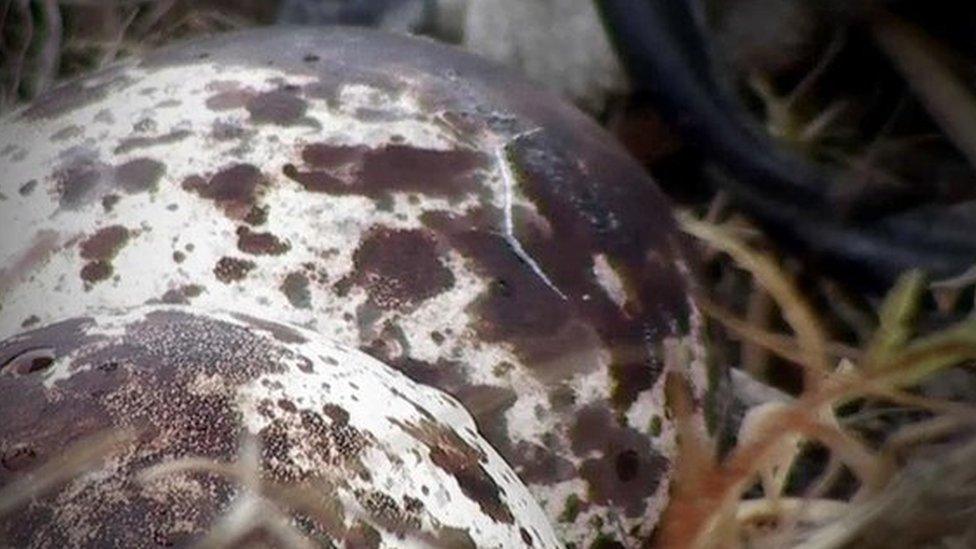
An egg hatches at Cors Dyfi

Ospreys
They are found on every continent except for Antarctica
The accepted Welsh name for ospreys is Gwalch y Pysgod
All bird of prey species in the UK have yellow legs and feet - apart from the osprey which has white legs and feet
Ospreys have dark feathers in front of their eyes to reduce the glare from the water surface while hunting for fish
Young fledglings have a poor fishing success rate (5%) while experienced adults caught a fish in 92% of attempts in a 2010 study
Ospreys which breed in the northern countries across Europe, Russia, Canada and the US migrate thousands of miles south for the winter
They head back north again because soaring temperatures can kill chicks and tropical storms pose dangers
British ospreys tend to migrate to west Africa, with males tending to arrive a little earlier than females
Pairs do not remain together outside the breeding season, but will often breed together at the same nest in following years
Source: Dyfi Ospreys Projects
- Published4 May 2016

- Published30 May 2015
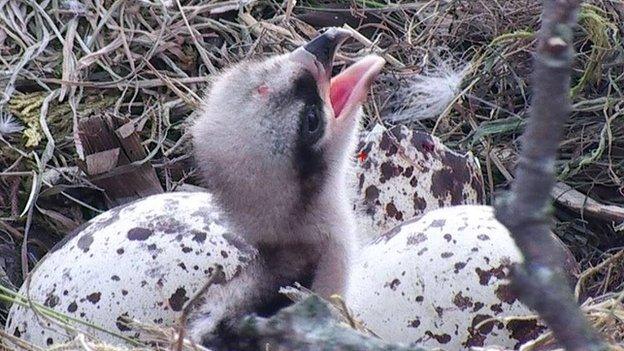
- Published3 June 2015

- Published11 April 2015
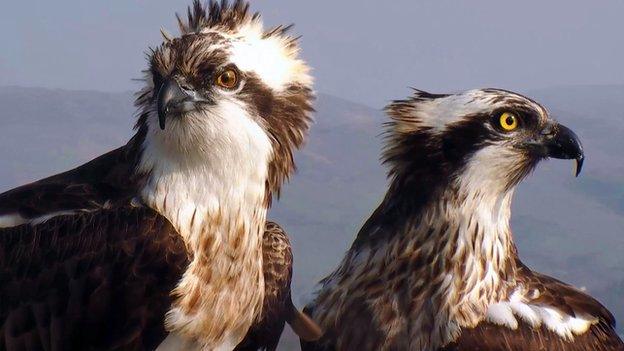
- Published15 May 2014
